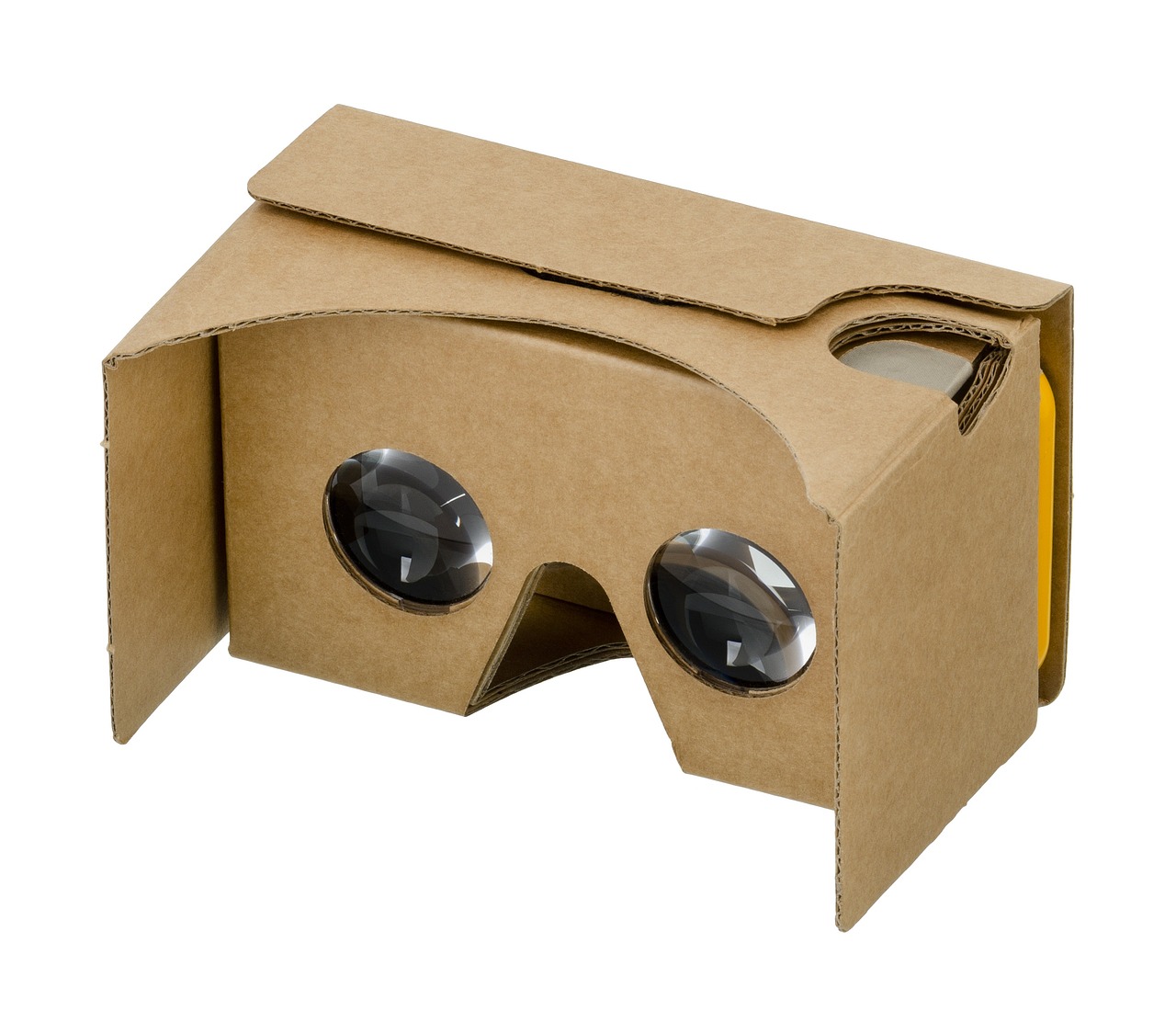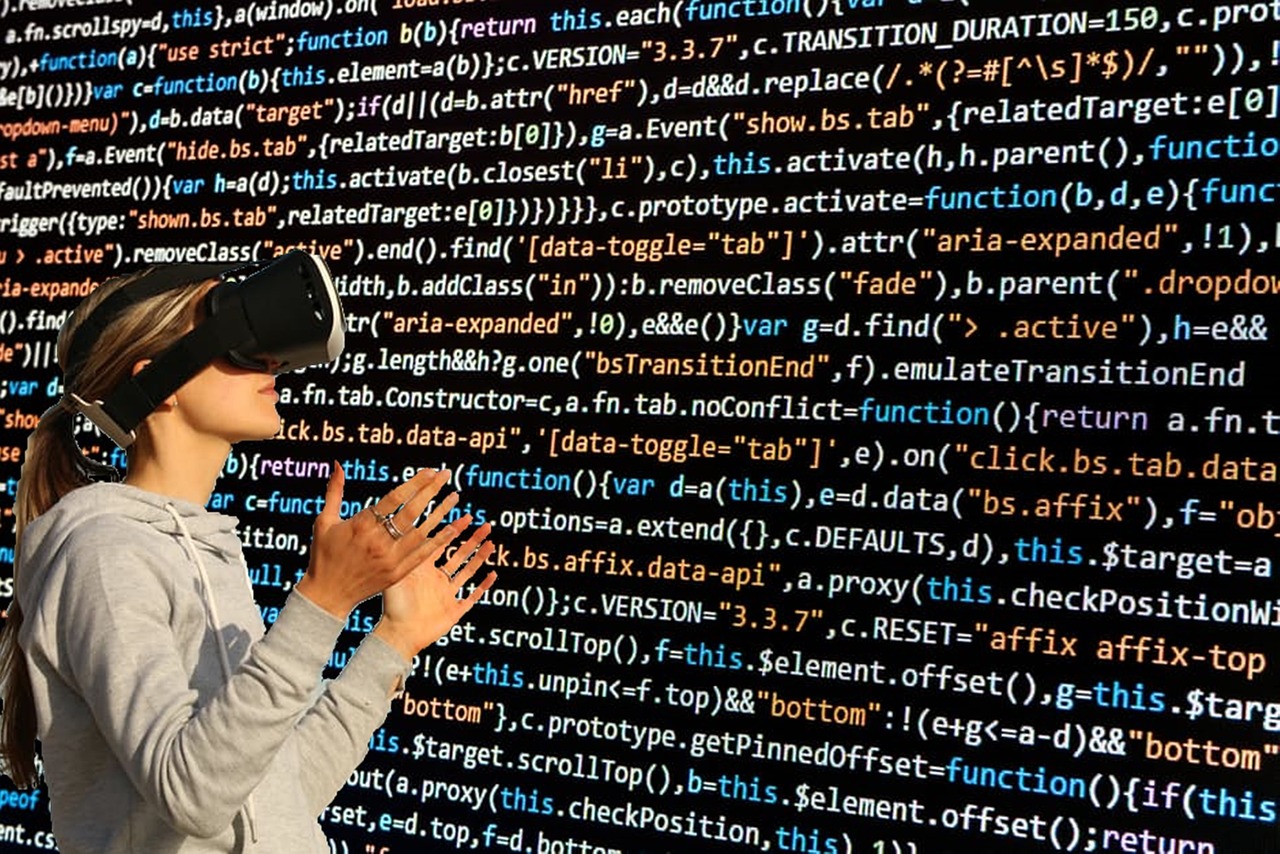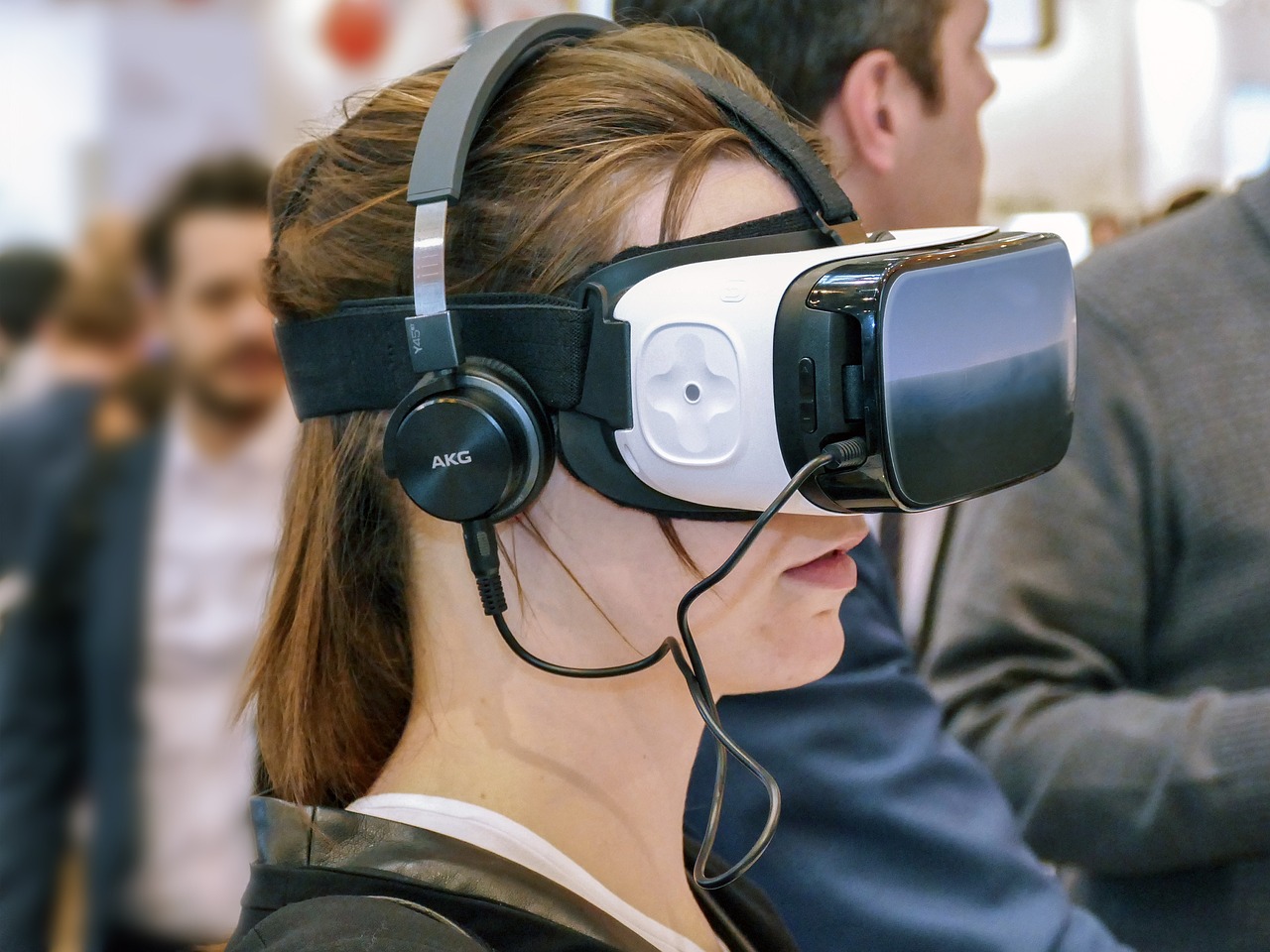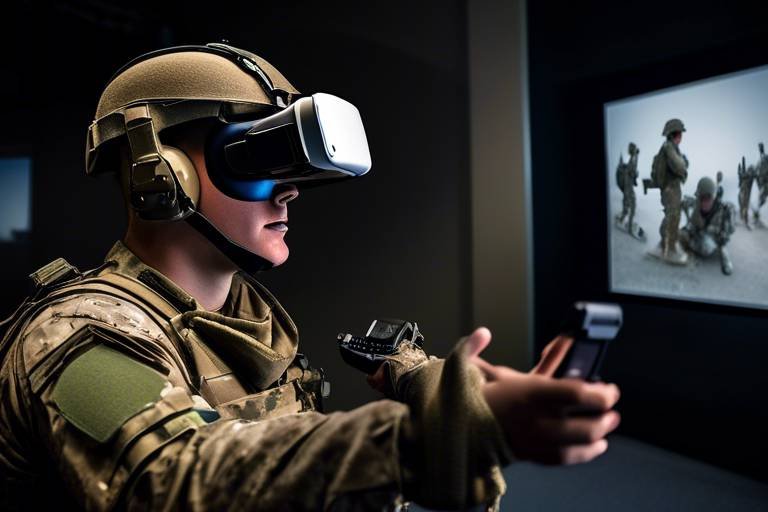The Impact of Virtual Reality on Weapons Familiarization
In recent years, the world of training and education has been revolutionized by the advent of Virtual Reality (VR). This technology is no longer just a gimmick for gamers; it has found its way into serious applications, particularly in weapons training for military and law enforcement personnel. Imagine stepping into a lifelike simulation where every detail, from the sound of the weapon firing to the feel of the recoil, is replicated. This immersive experience is not only changing how individuals learn to handle firearms, but it is also enhancing safety and effectiveness in training environments.
As we delve deeper into the impact of VR on weapons familiarization, it becomes clear that this technology offers a plethora of benefits. For starters, VR training can significantly reduce costs associated with traditional training methods. Instead of spending vast amounts on ammunition and range time, trainees can engage in realistic simulations without the financial burden. Additionally, the accessibility of VR systems allows for more frequent training sessions, ensuring that personnel remain sharp and prepared.
Moreover, one of the most exciting aspects of VR is its ability to enhance learning retention. Studies have shown that immersive experiences lead to better memory retention and skill acquisition. When trainees are fully engaged in a simulation, they are more likely to remember the procedures and techniques necessary for real-world scenarios. This is akin to the difference between reading about swimming and actually diving into the pool; the experience solidifies the learning in a way that theory alone cannot.
Another significant advantage of VR in weapons training is the capacity for realistic simulations. Trainees can face a variety of scenarios that mimic actual combat situations, from urban warfare to hostage rescue operations. This level of realism prepares them for the unpredictability of real-life encounters, enhancing their preparedness and response capabilities. It’s like practicing for a big game; the more you simulate the pressure and environment, the better you perform when it truly counts.
Furthermore, VR systems often come equipped with instant feedback mechanisms. This feature allows users to assess their performance in real-time, providing immediate insights into what they did right and where they need improvement. Imagine being able to adjust your aim or strategy on the fly, learning from your mistakes as they happen. This immediate feedback loop accelerates the learning curve and fosters a deeper understanding of weapon handling.
However, while the benefits of VR in weapons training are substantial, it is crucial to consider the challenges of implementing this technology. Not all organizations have the budget to invest in high-quality VR systems, and some may face technical limitations such as hardware requirements and software compatibility issues. These barriers can hinder effective training and prevent personnel from fully reaping the rewards of VR technology.
Additionally, user adaptability plays a significant role in the success of VR training programs. Not everyone may feel comfortable transitioning from traditional training methods to virtual environments. Some users may find the technology intimidating or may struggle to adapt to the new learning format. It’s essential for trainers to provide adequate support and resources to help ease this transition, ensuring that all personnel can benefit from the immersive training experiences.
In conclusion, the impact of virtual reality on weapons familiarization is profound and multifaceted. As this technology continues to evolve, it holds the potential to transform the way military and law enforcement personnel are trained, making them safer, more effective, and better prepared for the challenges they face in the field. The future of training is here, and it’s more immersive than ever.
- What is Virtual Reality? - Virtual Reality (VR) is a simulated experience that can be similar to or completely different from the real world.
- How does VR improve weapons training? - VR enhances weapons training by providing realistic simulations, instant feedback, and cost-effective training solutions.
- Are there any risks associated with VR training? - While VR training reduces physical risks, users may experience motion sickness or discomfort when using VR systems.
- How can organizations implement VR training? - Organizations can start by assessing their budget, researching available VR systems, and providing training sessions for users to adapt to the technology.

Understanding Virtual Reality Technology
Virtual Reality (VR) technology has revolutionized the way we perceive and interact with digital environments. At its core, VR immerses users in a computer-generated world that feels strikingly real, thanks to a combination of advanced hardware and sophisticated software. This technology typically involves several key components:
- Head-Mounted Displays (HMDs): These are the goggles that users wear, providing a 360-degree view of the virtual environment.
- Motion Tracking Sensors: These sensors track the user’s movements, allowing for real-time interaction within the VR space.
- Controllers: Handheld devices that enable users to manipulate objects and navigate through the virtual world.
- Audio Systems: Immersive sound enhances the experience, making it feel as though the user is truly present in the environment.
When it comes to weapons training, VR technology creates an unparalleled learning experience. Imagine stepping into a virtual battlefield where every sound, movement, and scenario is designed to mimic real-life situations. This level of immersion not only captivates the trainee's attention but also facilitates a deeper understanding of weapon mechanics and tactics.
In a traditional training environment, instructors might rely on static demonstrations or live-fire exercises, which can pose risks and logistical challenges. However, VR circumvents many of these issues by providing a safe and controlled environment where users can practice without the physical dangers associated with real firearms. The realism of these simulations can be so profound that trainees often report feeling genuine stress and adrenaline, akin to what they would experience in actual combat.
Moreover, the adaptability of VR technology allows for the continuous evolution of training scenarios. Instructors can modify conditions, introduce unexpected challenges, or simulate various environmental factors, such as weather changes or different terrains. This flexibility ensures that trainees are not only familiar with their weapons but also prepared for a wide range of situations they might encounter in the field.
As we delve deeper into the benefits of VR in weapons training, it becomes clear that this technology is not just a novelty; it's a powerful tool that enhances learning, increases safety, and prepares military and law enforcement personnel for the challenges they face. The future of weapons familiarization is undoubtedly intertwined with the advancements in VR technology, making it an essential component of modern training programs.

Benefits of VR in Weapons Training
This article explores how virtual reality (VR) is transforming weapons training, enhancing learning experiences, and improving safety measures for military and law enforcement personnel.
An overview of virtual reality technology, its components, and how it creates immersive environments for users, particularly in the context of weapons training.
Virtual reality has emerged as a revolutionary tool in weapons training, offering a plethora of advantages that traditional methods simply can't match. Imagine stepping into a world where you can practice your shooting skills without the inherent risks of live rounds or the need for expensive ammunition. This is where VR shines, providing a safe and controlled environment for trainees to hone their skills. One of the most significant benefits of VR is its cost-effectiveness. By simulating training scenarios, organizations can save on resources that would otherwise be spent on physical equipment, maintenance, and logistics.
Moreover, VR training is incredibly accessible. Whether you're a seasoned veteran or a novice, VR systems can be tailored to fit various skill levels, making it easier for everyone to participate. This accessibility extends beyond just the user; it also allows training programs to reach remote locations, breaking geographical barriers that often hinder effective training.
Another compelling advantage of VR in weapons training is the ability to simulate a wide range of scenarios without the risks associated with real-world training. For instance, trainees can engage in high-pressure situations that mimic combat environments or crisis scenarios. This exposure to realistic conditions prepares them for the unpredictable nature of real-life encounters. With VR, individuals can practice in a variety of settings, from urban landscapes to rural terrains, enhancing their adaptability and response capabilities.
One of the most fascinating aspects of VR is how it enhances learning retention. Studies have shown that immersive experiences can significantly improve memory retention and skill acquisition. When trainees are fully engaged in a virtual environment, they are more likely to remember the lessons learned and apply them effectively in real-life situations. It's akin to being in a video game where every move you make is part of a larger strategy; the more you play, the better you get. This concept of experiential learning is crucial in weapons training, where muscle memory and quick decision-making can mean the difference between success and failure.
In addition to enhancing retention, VR allows trainees to engage in realistic simulations that closely mimic actual combat situations. Imagine being able to practice your shooting skills in a virtual battlefield where you can feel the adrenaline rush of being under pressure. This realistic training helps to build confidence and prepares individuals for the mental and emotional challenges they may face in real life. With VR, the line between training and reality blurs, making the experience not only informative but also exhilarating.
Moreover, the instant feedback provided by VR systems is invaluable. Trainees can assess their performance in real-time, allowing them to make necessary adjustments on the fly. This immediate feedback loop is essential for skill development, as it helps users identify their strengths and weaknesses. Think of it as having a personal coach who is there to guide you every step of the way. With VR, users can track their progress and continually refine their skills, leading to more effective training outcomes.
Lastly, one of the most significant benefits of VR training is its ability to enhance safety and mitigate risks. Traditional weapons training often involves inherent dangers, including accidents and injuries. By utilizing VR, organizations can significantly reduce these risks, allowing trainees to practice in a safe and controlled environment. This not only protects the individuals involved but also reduces liability for organizations. In essence, VR training is a game-changer, promoting a culture of safety while still delivering high-quality training experiences.
Identifying the potential challenges and limitations of integrating VR technology into weapons familiarization programs, such as costs, technological barriers, and user acceptance.
Discussing the technical challenges that may arise with VR systems, including hardware requirements and software compatibility issues that can hinder effective training.
Exploring the varying levels of comfort and adaptability among users when transitioning from traditional training methods to virtual environments.
- What is virtual reality training?
Virtual reality training involves using VR technology to create immersive training scenarios, allowing users to practice skills in a safe environment.
- How does VR improve learning retention?
VR enhances learning retention by providing immersive experiences that engage users, making it easier to remember skills and knowledge.
- Is VR training safe?
Yes, VR training significantly reduces the risks associated with traditional training methods, allowing for safer practice.
- What are the costs associated with VR training?
While initial setup costs can be high, VR training can save money in the long run by reducing expenses related to traditional training methods.

Enhanced Learning Retention
When it comes to learning, we all know that retention is key. Imagine trying to memorize a complex dance routine without practicing it in front of a mirror; it just wouldn't stick, right? This analogy perfectly illustrates the importance of immersive experiences in training, especially when it involves something as critical as weapons familiarization. Virtual Reality (VR) takes this concept to a whole new level, providing an environment where users can not only see but actively engage with their training scenarios. This level of engagement is crucial for enhancing learning retention.
Research shows that when learners are fully immersed in a scenario, their brains process information differently than in traditional learning environments. In VR, the user is not just a passive observer; they are an active participant. This active participation is akin to learning how to ride a bike. You can read all the manuals and watch countless videos, but until you actually sit on that bike and pedal, the learning won’t truly take place. VR allows trainees to practice handling weapons in various scenarios, from routine drills to high-pressure situations, which significantly boosts their ability to recall and apply what they’ve learned.
Moreover, the multi-sensory experience provided by VR—combining visual, auditory, and tactile feedback—further enhances retention. Studies indicate that people remember information better when multiple senses are engaged. For example, consider how you remember a song: it’s not just the lyrics but also the melody and rhythm that stick with you. Similarly, VR training incorporates sound effects, realistic visuals, and even the feel of the weapon, making the learning experience more holistic and memorable.
Another fascinating aspect of VR is its ability to create personalized learning experiences. In traditional settings, one-size-fits-all approaches often leave some trainees behind. However, with VR, instructors can tailor scenarios to match individual skill levels and learning speeds, ensuring that each trainee gets the most out of their experience. This customization leads to a deeper understanding and retention of skills, as users can repeat scenarios as needed until they feel confident.
To illustrate the effectiveness of VR in enhancing learning retention, consider the following table that compares traditional training methods with VR training:
| Aspect | Traditional Training | VR Training |
|---|---|---|
| Engagement Level | Passive | Active |
| Multi-Sensory Experience | Limited | Comprehensive |
| Personalization | Standardized | Tailored |
| Risk of Injury | High | Low |
In summary, the enhanced learning retention provided by VR is a game-changer for weapons training. By creating immersive, engaging, and personalized experiences, VR not only makes learning more effective but also ensures that trainees are better prepared for real-world scenarios. So, the next time you think about training methods, remember that the future is not just about learning; it’s about truly experiencing that learning in a way that sticks.
- How does VR improve learning retention? VR engages multiple senses and allows for active participation, which enhances memory and skill acquisition.
- Are VR training programs expensive? While initial costs can be high, the long-term savings on training materials and safety make VR a cost-effective solution.
- Can VR training be customized for different skill levels? Yes, VR allows for tailored training experiences that can adjust to the user's proficiency.
- Is VR training safe? Absolutely! VR significantly reduces the risks associated with traditional weapons training.

Realistic Simulations
When it comes to weapons training, nothing beats the power of realism. Virtual reality (VR) technology has taken this concept and propelled it into a new dimension, offering trainees the chance to engage in scenarios that closely resemble real-life combat situations. Imagine stepping into a virtual battlefield where every sound, sight, and even the feel of the weapon in your hands is meticulously crafted to mimic reality. This isn’t just a video game; it’s a training tool that prepares military and law enforcement personnel for the unpredictable nature of their duties.
One of the most remarkable aspects of VR is its ability to create a variety of environments and situations. Trainees can experience anything from urban warfare to hostage rescue scenarios, all without the inherent risks associated with live-fire training. This flexibility allows instructors to tailor training sessions to the specific needs of their teams, ensuring that they are well-prepared for any situation they might encounter on the job. For instance, a police officer might practice de-escalation techniques in a crowded market, while a soldier could rehearse tactics for a nighttime raid in a foreign environment.
Furthermore, the immersive nature of VR training enhances the learning experience. When trainees are fully engaged in a virtual environment, they are more likely to remember their training. Studies have shown that immersive simulations can lead to significantly better retention of skills compared to traditional training methods. This is akin to learning to ride a bike; the more you practice in a realistic setting, the better you become. In VR, this practice can be repeated countless times without the constraints of time or resources.
Moreover, the ability to simulate high-stress scenarios allows users to develop their decision-making skills under pressure. In real life, the stakes are high, and the ability to think clearly and act decisively can mean the difference between life and death. VR training provides a safe space for individuals to make mistakes and learn from them, all while receiving instant feedback on their performance. This feedback loop is crucial as it helps trainees identify their weaknesses and areas for improvement, making them more effective in real-world situations.
In summary, the incorporation of realistic simulations in VR training transforms the way we approach weapons familiarization. By providing a safe, immersive, and adaptable training environment, VR not only enhances skill acquisition and retention but also prepares personnel for the challenges they will face in the field. As technology continues to evolve, the potential for even more sophisticated and realistic training scenarios is limitless, paving the way for a new era in weapons training.
- What is VR training? VR training uses virtual reality technology to create immersive training environments that simulate real-world scenarios.
- How does VR improve weapons training? It enhances realism, allows for repeated practice, and provides instant feedback, leading to better skill retention and decision-making.
- What are the safety benefits of VR training? VR training minimizes the risks associated with live-fire exercises, reducing the chances of accidents and injuries.
- Are there challenges in implementing VR training? Yes, challenges include technical limitations, costs, and varying levels of user adaptability.

Feedback Mechanisms
In the realm of virtual reality (VR) training, play a pivotal role in shaping the learning experience of military and law enforcement personnel. Imagine stepping into a virtual world, where every action you take is met with immediate analysis and insight. This instant feedback loop not only fosters a deeper understanding of weapon handling but also accelerates the learning curve significantly. Unlike traditional training environments, where feedback might come hours or days later, VR provides real-time assessments that allow users to make swift adjustments, enhancing their overall proficiency.
One of the standout features of VR training systems is their ability to simulate various scenarios, each with its own set of challenges. For instance, during a simulated combat situation, a trainee might receive immediate feedback on their shooting accuracy, stance, or decision-making processes. This is akin to having a personal coach who is always present, ready to provide guidance and corrections. The data collected during these sessions can be analyzed and visualized in various formats, allowing users to track their progress over time. For example, a detailed report might include metrics such as:
| Metric | Description |
|---|---|
| Accuracy Rate | Percentage of successful hits on target. |
| Reaction Time | Time taken to respond to a simulated threat. |
| Decision-Making Speed | Time taken to make critical decisions during scenarios. |
This kind of detailed feedback not only highlights areas for improvement but also boosts the trainee's confidence. When individuals can see their progress in real-time, it creates a sense of accomplishment and motivates them to push their limits further. Moreover, many VR systems incorporate visual and auditory cues that provide additional context to the feedback. For instance, if a trainee makes a poor decision during a scenario, they might hear a simulated voiceover explaining the consequences of their actions, driving home the importance of strategic thinking.
Furthermore, the ability to replay scenarios allows users to reflect on their performance critically. This reflective practice is essential in honing skills, as it encourages trainees to analyze their choices and understand the implications of their actions in a safe environment. In this way, VR not only trains the body but also sharpens the mind, preparing personnel for real-world situations where split-second decisions can mean the difference between success and failure.
In summary, the feedback mechanisms embedded in VR training systems are not just an added feature; they are a transformative element that enhances the learning experience. By providing immediate, actionable insights, these systems ensure that trainees are not merely going through the motions but are actively engaging in their development as skilled operators. This level of interactivity and responsiveness is what sets VR apart from traditional training methods, making it an invaluable tool in the field of weapons familiarization.

Safety and Risk Mitigation
When it comes to weapons training, safety is paramount. Traditional methods often involve live ammunition and real firearms, which inherently come with a plethora of risks. However, the introduction of virtual reality (VR) technology into weapons familiarization has revolutionized the landscape of training by significantly enhancing safety measures. VR provides a controlled environment where trainees can learn and practice without the fear of physical harm. Imagine being able to handle a weapon, simulate firing, and engage in tactical scenarios without the risk of injury or accidental discharge. This is the power of VR in action.
One of the most compelling aspects of VR training is its ability to minimize accidents. In a traditional training setting, the potential for mishaps is always looming. With VR, the possibility of a live round going off or an unexpected incident occurring is virtually eliminated. Trainees can make mistakes and learn from them without any real-world consequences. This risk mitigation is not only beneficial for the trainees but also for the instructors and the organizations that oversee the training programs.
Moreover, VR systems often incorporate safety protocols that can further enhance the training experience. For instance, they can simulate high-pressure scenarios where trainees must respond quickly and accurately. These simulations can be designed to include safety features that prevent users from making dangerous decisions, effectively teaching them the importance of caution and precision in real-life situations. The immersive nature of VR allows users to feel the weight of their decisions in a safe environment, which can lead to better preparedness when facing actual threats.
Additionally, VR training can be customized to include various safety scenarios that might be encountered in the field. For example, a trainee could be placed in a virtual environment where they must navigate through a crowded area, identifying potential hazards and making decisions that prioritize safety. This kind of training helps to instill a mindset focused on risk assessment and management, which is crucial for military and law enforcement personnel.
In summary, the integration of VR technology into weapons training offers a revolutionary approach to safety and risk mitigation. By providing a risk-free environment for trainees to practice and learn, organizations can ensure that their personnel are better prepared for real-life situations. The benefits are clear: enhanced safety, improved learning outcomes, and a greater emphasis on responsible weapon handling. As we continue to embrace technological advancements, the potential for VR in weapons training is only just beginning to be realized.
- What is virtual reality training?
Virtual reality training uses immersive technology to create realistic simulations for users to practice skills in a controlled environment.
- How does VR improve safety in weapons training?
VR eliminates the risks associated with live ammunition and real firearms, allowing trainees to learn without the threat of physical harm.
- Can VR training be customized for different scenarios?
Yes, VR training can be tailored to simulate various situations, helping trainees prepare for a wide range of potential challenges.
- Is VR training effective for skill retention?
Studies suggest that immersive experiences in VR can lead to improved memory retention and skill acquisition compared to traditional training methods.

Challenges of Implementing VR Training
While the potential of Virtual Reality (VR) in weapons training is indeed exciting, it doesn't come without its fair share of challenges. One of the most significant hurdles is the cost associated with implementing VR systems. High-quality VR hardware and software can require substantial investment, which may be a deterrent for military and law enforcement agencies operating on tight budgets. Moreover, the need for ongoing maintenance and updates adds to the financial burden.
Another challenge lies in the technical limitations of VR technology. For instance, the hardware requirements for VR systems can be quite demanding. Users often need powerful computers and specialized equipment to run VR simulations effectively. This can lead to compatibility issues, particularly if agencies are using a mix of different technologies and platforms. If the software and hardware aren’t perfectly aligned, it can lead to frustrating experiences that detract from the training's effectiveness.
Furthermore, the adaptability of users plays a crucial role in the successful integration of VR training. Not everyone is comfortable with new technology, and some individuals may find transitioning from traditional training methods to virtual environments challenging. This can create a gap in training efficacy, as those who struggle with the technology may not receive the full benefits of VR. It’s essential for agencies to provide adequate training and support to help all users become familiar with the VR systems.
Additionally, there are concerns about user acceptance. Some trainees may be skeptical about the effectiveness of VR training compared to traditional methods. They might question whether virtual experiences can truly replicate the stress and unpredictability of real-life combat situations. This skepticism can hinder the overall adoption of VR training programs and necessitates a cultural shift within organizations. It's vital to demonstrate the value and effectiveness of VR through pilot programs and success stories to win over hesitant users.
Finally, there’s the challenge of integrating VR training with existing training protocols. Traditional weapons training programs have been established over many years, and introducing VR requires a reevaluation of these methods. Agencies need to ensure that VR training complements rather than replaces essential hands-on experiences. This means developing a hybrid approach that leverages the strengths of both traditional and VR training methods.
In summary, while the benefits of VR in weapons training are clear, overcoming these challenges is crucial for successful implementation. Addressing cost, technical limitations, user adaptability, acceptance, and integration will pave the way for a more effective training environment that harnesses the full potential of virtual reality.
- What is the main advantage of using VR in weapons training?
The primary advantage is the ability to simulate various scenarios without real-world risks, allowing for safe and effective training.
- Are there any safety concerns with VR training?
While VR reduces risks associated with traditional training, there can be concerns about users becoming disoriented or experiencing motion sickness.
- How can organizations address user skepticism about VR training?
Organizations can conduct pilot programs and share success stories to demonstrate the effectiveness of VR training.
- Is VR training cost-effective?
While initial costs can be high, VR training can ultimately save money by reducing the need for live ammunition and minimizing accidents.

Technical Limitations
When it comes to the integration of Virtual Reality (VR) in weapons familiarization, there are some that can pose challenges. First off, the hardware requirements for VR systems can be quite demanding. Not every training facility is equipped with the latest technology, and older systems may struggle to support the high-quality graphics and processing power needed for immersive experiences. This can lead to a disparity in training quality, where some users benefit from advanced simulations while others are left behind with outdated equipment.
Moreover, software compatibility is another hurdle that can complicate the implementation of VR training programs. Different VR systems often have unique software environments, which can make it difficult to develop and deploy training modules that work seamlessly across various platforms. Imagine trying to run a cutting-edge VR simulation on a system that just can’t keep up—that’s a recipe for frustration! This not only affects the training experience but can also lead to wasted resources and time.
Additionally, the cost of VR technology itself can be a significant barrier. High-quality VR headsets, motion tracking systems, and the necessary computing power can add up quickly. For many military and law enforcement agencies, budgets are tight, and investing in VR technology might not be feasible. This financial strain can limit the availability of VR training programs, leaving many personnel to rely on traditional training methods that may not be as effective.
Finally, there’s the issue of user adaptability. Not everyone is comfortable with new technology, and transitioning from traditional weapons training to a virtual environment can be daunting for some individuals. While younger generations may adapt quickly, older personnel might struggle with the learning curve associated with VR systems. This disparity can result in uneven training experiences, where some users thrive in the virtual world while others feel lost and disengaged.
In summary, while VR holds great promise for enhancing weapons familiarization, these technical limitations must be addressed to fully realize its potential. By investing in the right hardware, ensuring software compatibility, managing costs effectively, and providing adequate training for users, organizations can overcome these challenges and create a more uniform and effective training environment.
- What are the main technical limitations of VR in weapons training?
Some main limitations include hardware requirements, software compatibility issues, high costs, and user adaptability challenges. - Can older systems support modern VR training?
Typically, older systems may struggle with the demands of modern VR applications, leading to a subpar training experience. - How can organizations address the cost of VR technology?
Organizations can explore funding options, partnerships, and phased implementations to manage costs while adopting VR technology. - Is VR training suitable for all personnel?
While many users may adapt quickly to VR training, others, especially those less familiar with technology, may require additional support and training.

User Adaptability
User adaptability is a crucial factor when it comes to integrating virtual reality (VR) technology into weapons familiarization training. While the potential of VR is immense, the transition from traditional training methods to immersive virtual environments can be a daunting task for many users. Imagine stepping into a world where your training is not just theoretical but practically immersive; however, this shift can lead to varying levels of comfort and acceptance among different individuals. Some users may embrace this new technology with open arms, while others may feel overwhelmed or skeptical about its effectiveness.
One of the primary challenges is the **learning curve** associated with using VR systems. For individuals who are accustomed to hands-on, physical training, the idea of donning a VR headset and interacting with a digital environment can feel alien. This transition requires a certain level of **tech-savviness** that not all users possess. For instance, older personnel or those who have limited exposure to modern technology might find it particularly challenging to adapt. In such cases, tailored training sessions focusing on the technology itself can help ease this transition. Providing a clear understanding of how VR works and its benefits can significantly enhance user confidence.
Moreover, the **physical aspect** of VR training cannot be overlooked. Some users may experience discomfort or motion sickness due to the immersive nature of VR. This can deter them from fully engaging with the training program. Addressing these concerns is essential; developers and trainers should work together to create environments that minimize discomfort, perhaps by allowing users to adjust settings or provide breaks during sessions. Additionally, incorporating feedback from users can lead to improvements in the overall experience, making it more user-friendly and accessible.
It's also important to recognize that adaptability is not solely about comfort with technology. It's about the **mindset** of the users. Those who are open to change and willing to embrace new methods are more likely to benefit from VR training. On the other hand, individuals who are resistant to change may find themselves struggling, which can hinder their learning process. To foster a positive attitude towards VR training, organizations should emphasize the advantages it brings, such as enhanced safety and more realistic training scenarios.
In conclusion, while user adaptability presents challenges, it also offers opportunities for growth and improvement in training methodologies. By focusing on education, comfort, and a positive mindset, organizations can facilitate a smoother transition to VR training. This, in turn, will lead to more effective weapons familiarization, ultimately enhancing the preparedness and capability of military and law enforcement personnel.
- What is virtual reality training? Virtual reality training uses immersive technology to simulate real-world scenarios for educational or training purposes.
- How does VR improve weapons training? VR allows for realistic simulations, instant feedback, and safe practice environments, enhancing learning retention and skill acquisition.
- Are there any risks associated with VR training? While VR training significantly reduces physical risks, users may experience discomfort or motion sickness, which can be mitigated with proper design and user education.
- How can organizations help users adapt to VR training? Providing thorough training on VR technology, addressing user concerns, and fostering a positive mindset towards new methods can aid in user adaptability.
Frequently Asked Questions
- What is virtual reality (VR) and how is it used in weapons training?
Virtual reality (VR) is a technology that creates an immersive digital environment, allowing users to interact with a simulated world. In weapons training, VR is used to replicate various combat scenarios, enabling military and law enforcement personnel to practice their skills in a safe and controlled setting.
- What are the main benefits of using VR for weapons familiarization?
Using VR for weapons training offers several advantages, including cost-effectiveness, increased accessibility, and the ability to simulate high-risk scenarios without real-world consequences. It enhances learning retention by providing immersive experiences that help users remember training material better.
- How does VR enhance learning retention in weapons training?
VR enhances learning retention by engaging users in realistic, interactive scenarios that require active participation. This immersive experience helps solidify skills and knowledge, making it easier for trainees to recall information and perform under pressure.
- Are there any safety benefits associated with VR training?
Absolutely! VR training significantly reduces the risks associated with traditional weapons training. By practicing in a virtual environment, trainees can avoid accidents and injuries that may occur during live-fire exercises, ensuring a safer learning experience.
- What challenges might arise when implementing VR training?
Some challenges include the high costs of VR technology, potential technical limitations such as hardware requirements, and user acceptance. Not everyone may be comfortable transitioning from traditional methods to virtual environments, which can affect the overall effectiveness of the training.
- How does instant feedback work in VR training?
Instant feedback in VR training is provided through real-time performance assessments. As users engage with the virtual environment, they receive immediate insights into their actions, allowing them to make quick adjustments and improve their skills on the spot.
- What types of scenarios can be simulated in VR weapons training?
VR technology can simulate a wide range of scenarios, including urban combat, hostage rescue situations, and tactical decision-making exercises. This versatility allows trainees to experience diverse challenges and develop their skills in various contexts.
- Is VR training suitable for all levels of experience?
Yes, VR training can be tailored to accommodate users of all experience levels. Whether someone is a beginner or an experienced operator, VR systems can adjust the complexity of scenarios to ensure effective learning and skill development.



















